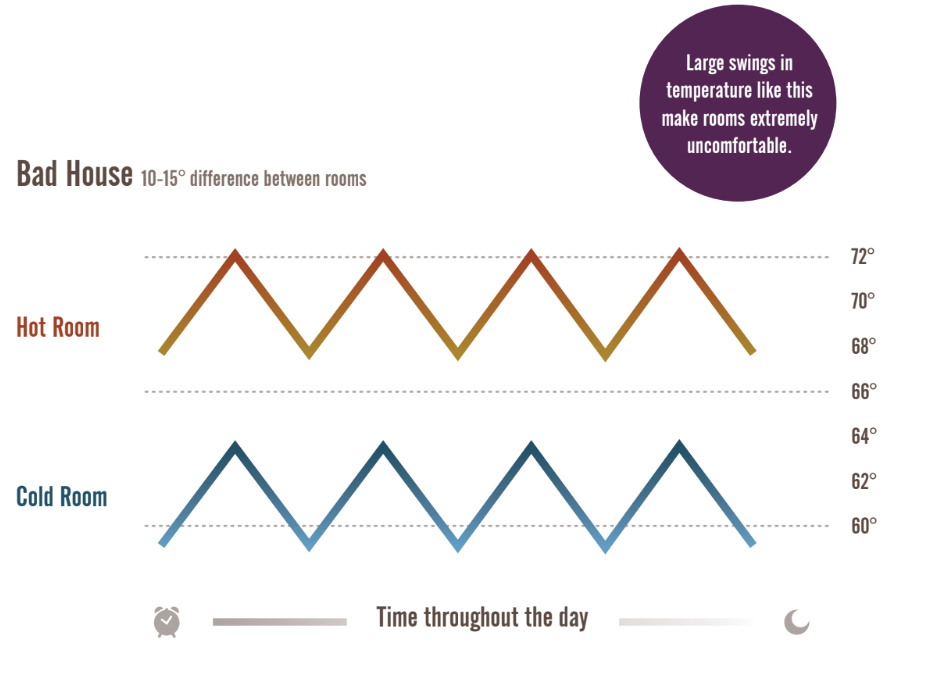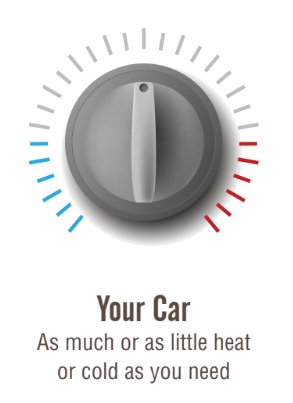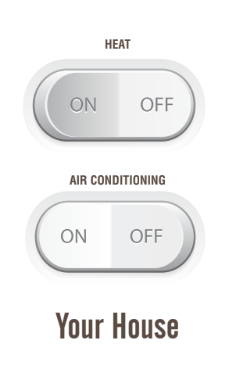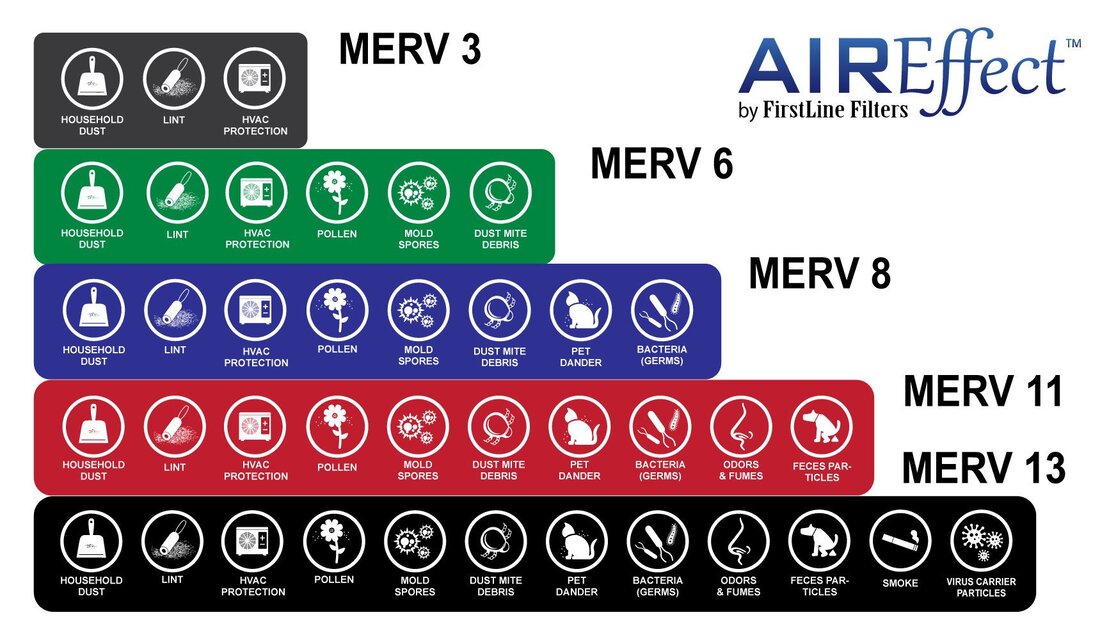|
Done right, the HVAC in your home can make it very comfortable, and very healthy. One might even call it bad ass. But it needs to have a few relatively simple tweaks to be able to deliver what we call The 6 Functions of HVAC, and do it well:
The trouble is 87% of heating and cooling systems are replaced on an emergency basis. This means mindfulness of the 6 functions is overridden by “I need heat ASAP, and as cheap as possible” myopic urgency. If you have an HVAC system (furnace, air conditioner, heat pump, boiler, etc.) that is over 10 years old, it’s a good idea to build a replacement specification now, before you find a gun to your head and a hand rummaging through your wallet. Otherwise, when it dies you’re going to get the first piece of equipment that the first guy who shows up wants to install, and it will almost certainly fail to make your home comfier or healthier. Since these systems last 15-20 years, getting the equipment right avoids either replacing it twice (we have replaced very new equipment), or signing on to a long term bad relationship. When people hire us we find the only consistent way to deliver better comfort through the 6 functions is to replace the system. Again, this is often replacing systems well before reasonable life expectancy. Think about how it feels to waste $8,000 - $20,000 replacing a system you recently replaced. It’s so wasteful! We hate the waste, so we invented what we affectionately call BAD ASS HVAC. BAD ASS HVAC is a (pretty) simple system that can tackle the 6 Functions, and most HVAC contractors can install it. Why are those 6 important? And what is BAD ASS HVAC? We’ll be exploring those over the next few months. Today we’ll talk about the first two - load matching and filtration. Load Matching We list the 6 functions in order of priority, and we’ve found load matching is the most critical for comfort. Do you notice that your house is particularly cold on 40-55 degree days? Your HVAC is may be too large. If you graphed your temperature it would look like this, with air temperature going up and down quickly: Furnaces and air conditioners are supposed to be sized to heat or cool on the coldest and hottest days of the year in your climate. At these temperatures the equipment should run continuously or near continuously. Calculating this “worst case load” takes some measuring and some math. The problem is without using a blower door to measure your home’s leakage, and looking at your energy bills, sizing your HVAC is a wild ass guess, with a broad variance of answers. For a LOT of reasons (fear, greed, urgency, ambivalence) people tend to lean way to the high side of the range. Almost every furnace we’ve seen is at least twice as big as it needs to be. So why does that matter? About 60% of human comfort is based on radiant energy. Think about how pleasing a bonfire or sunny day is. Those are both radiant energy, and our bodies love it. In our homes, radiant energy is given off (or sucked in) by the walls, floors, and ceilings around us. Right sized HVAC washes the walls, ceilings, and floors of your house with a slow steady stream of heat or cool. Nice even surface temperatures give off pleasing radiant energy just like a fire or the sun. If you want to be comfy, we need to keep those surfaces within 2 degrees of the thermostat set point. To do that, we want our HVAC to be running almost constantly putting out exactly as much heating or cooling as our home needs at that moment - this is called “load matching”. The trouble is, most home heating and cooling systems are single stage, meaning on or off. Compare that to your car: With an oversized furnace or air conditioner all they can give you is a blast of heating or cooling. One speed means you don’t get “subtle.” It’s the Ice Bucket Challenge instead of a nice cool shower on a hot day. To do “subtle” we need right sized, multiple stage HVAC. I dig deep into this in Chapter 3 of The Home Comfort Book. How do you get right sized HVAC? Imagine going into a clothing store and being told that a small, medium, large, XL, or XXL could fit you. But the clothing is $8000 per item, you can’t return it, and you can’t try it on. That’s about what typical load calculations end up being. A load calculation takes characteristics of your house to help decide which size HVAC is right for your house on the hottest or coldest day of the year. The industry standard calculation is called a Manual J. If you measure how much a house leaks using a blower door test, run an energy model and reconcile with how much energy the house is actually using per year, and your load calculations get much more accurate. You’ll know within ½ ton what size the house needs. Yes, perfect is hard to achieve, but we see most equipment oversized by 1.5 - 4 tons Once you install right sized, multiple stage HVAC, you’ll notice how the rooms are more even, and the temperatures no longer race up and down. (The exception to this might be a very leaky room like a bonus room over a garage, and that would be uncovered during a blower door test that includes zonal measurements.) Oversizing HVAC equipment is about the single biggest problem we see. Once installed, it’s nearly impossible to reduce its output, so if you choose wrong, the only way to fix it is to buy another HVAC system. HVAC is only part of the comfort picture. If your house is leaky, you will have to address the leaks if you want comfort. HVAC will only fix so much. So if your house is leaky and you find yourself in need of HVAC, we advise installing equipment for the house you plan to have, not the one you have now. The house isn’t going to be fantastically comfortable anyway, and chances are it’ll be more comfortable 90% of them time if you undersize than if you oversize. You want to size to where you are going, not where you are. Otherwise expect the air temperature in your home to race up and down, and the surfaces of your home to remain cold while literally sucking the heat out of you. Instead, make sure your HVAC is BAD ASS… more on that in a few months. Filtration Did you know we breathe 3000 gallons of air a day? And that over 90% of that is indoors? In fact many of our kids spend less time outdoors than maximum security inmates do. Should we think more about indoor air quality? Google PM2.5. Go on. Do it. It’s a really dry thing that really matters to human health, the World Health Organization considers it one of the biggest dangers to human health. It also happens to be really easy to deal with inside your home using your HVAC system. PM 2.5 stands for Particulate Matter 2.5 microns and below. It’s really small dust. Anything that small gets inhaled directly into your lungs. Below 1 micron it’s even worse, particles that small will go right through your lungs and into your blood. For example, diesel exhaust contains a lot of particles under 1 micron, and they tend to be heavy metals. Really, really bad news to breathe. If you live within a mile of a large road, you’re probably breathing diesel exhaust right now, even indoors. Thankfully it’s pretty easy to filter most of that garbage out with a good filter, we recommend MERV 11 or above. HEPA is the highest grade available and is roughly MERV 16. The problem is most HVAC systems can’t handle the thick (4-5”) media filters needed to do this, and even if they can, many fans use so much energy that it can cost $50-100/month to run the furnace fan (aka air handler) to filter the house 24/7.
But not with BAD ASS HVAC… we consistently see our systems using $1-10/month worth of electricity to run the furnace or air handler fan 24/7. Is it worth that to provide clean air to you and your family? Personally, I finally get to put a BAD ASS system in my own house in the next few months, and I find it totally worth it! Next Time Those are the first two Functions of HVAC. Next time we’ll dig into a few more. A key thing to keep in mind - every car with air conditioning can do five out of 6! Few houses can even do one of them. We’d like to see that change. Resources Healthy Indoors Magazine publishes these blogs as well, check out my column and the other great info in the magazine. HVAC 101 - Most of the graphics in the post are from The Home Comfort Book. The 6 Functions is pulled directly from HVAC 101. If you are considering new HVAC, I highly recommend you read HVAC 101, a short 16 page chapter with a bunch of illustrations. If you like that, read Comfort 101. And if you like them both, buy the book. |
AuthorNate Adams is fiercely determined to get feedback on every project to learn more about what works and what doesn't. This blog shows that learning process. |
ServicesCompany |
Buy The Home Comfort Book!
© COPYRIGHT 2017. ALL RIGHTS RESERVED.
|
 RSS Feed
RSS Feed







